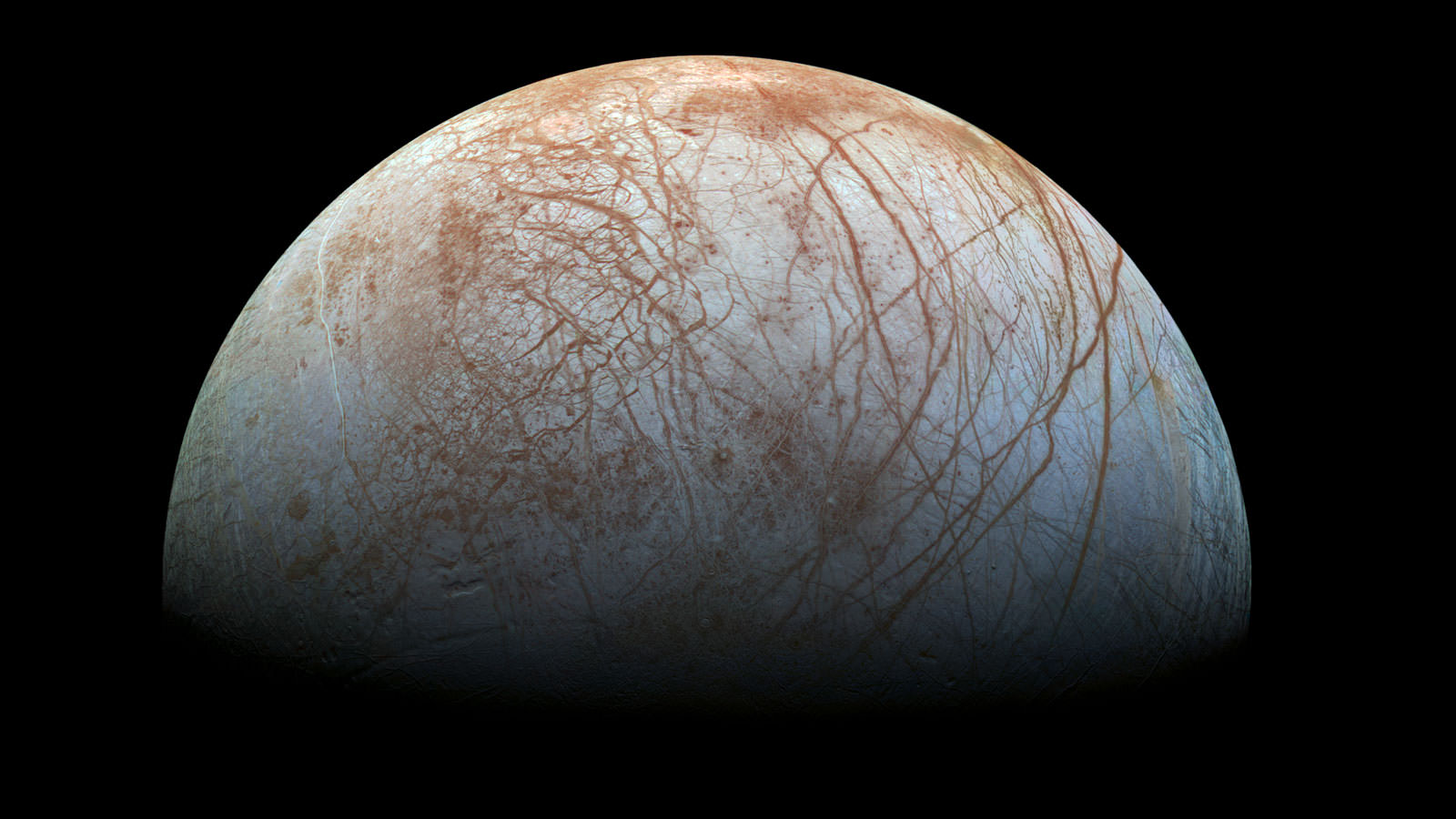Jupiter’s moon Europa has been the subject of fascination ever since the Pioneer 10 and 11 and Voyager 1 and 2 missions passed through the system back in the 1970s. While the moon has no viable atmosphere and is bombarded by intense radiation from Jupiter’s powerful magnetic field, scientists believe that one of the most likely places to find life beyond Earth exists beneath its icy surface.
Little wonder then why multiple missions are being planned to study this moon up-close. However, if and when those missions reach Europa sometime in the next decade, they will have to contend with some sharp surface features that could make it hard to land. Such is the conclusion of a new study by researchers from Britain, the US and NASA’s Ames Research Center, which indicates that Europa’s surface is covered in bladed terrain.

